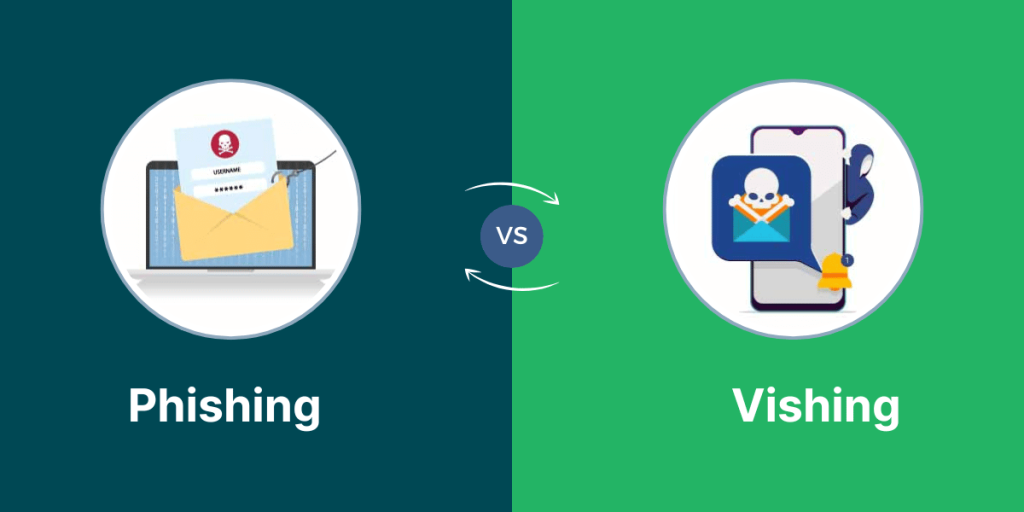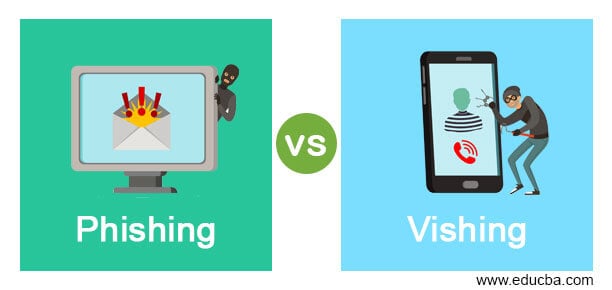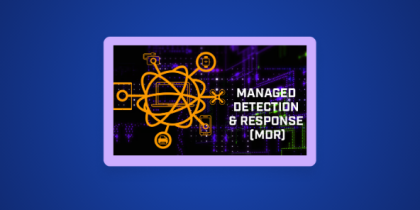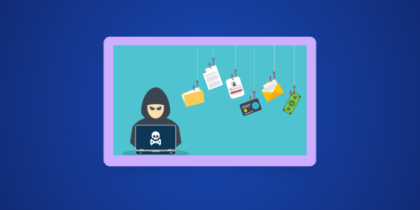In today’s digital world, cybercriminals don’t just rely on emails or fake websites, they’ve found a new way to reach you: your voice. This modern twist on online scams is called vishing in cyber security, short for voice phishing.
It’s a technique where attackers use convincing phone calls to pose as trusted sources like your bank, office, or tech support.
Did you know that over 75% of data breaches begin with social engineering attacks and a growing number now happen through phone calls instead of emails?
That’s what makes vishing one of the fastest-rising threats today. In this guide, we’ll break down what vishing is, how vishing attacks work, and the practical steps you can take to stay safe from voice phishing scams.
What Is Vishing in Cyber Security?

Vishing in cyber security is a voice phishing technique where cybercriminals use phone scams or voice messages to trick people into sharing sensitive data like bank details or passwords. This social engineering tactic exploits human trust, making it more deceptive than email-based phishing.
In fact, according to the FBI’s Internet Crime Report 2023, vishing and related cyber threats caused over $1.3 billion in reported losses. As vishing attacks continue to rise, understanding how they work is crucial to protect against data theft and identity fraud.
Why Vishing Matters
Vishing often involves skilled social engineering. The caller might know your name, workplace, or partial account details making them seem legitimate.
These small personal touches can disarm even cautious people. And because voice feels more personal and urgent, vishing often has a higher success rate than traditional phishing emails.
Cyber security experts warn that vishing is rising fast because it bypasses technical defenses like spam filters or antivirus programs. Awareness is the only real defense.
How Does Vishing Works?
A vishing scam doesn’t happen randomly; it follows a clear pattern of planning and manipulation. Attackers start by researching their targets, then use deceptive tactics to gain trust and extract information.
Let’s look at how a vishing attack lifecycle typically unfolds.
1. Research and Targeting
Attackers gather information from social media, data breaches, or public company directories.
This stage called reconnaissance in cybersecurity frameworks helps the attacker sound credible. For example, they may know your bank name, workplace, or position title before calling.
2. The Initial Call
The vishing attacker contacts the target through caller ID spoofing (a technique that makes the number appear legitimate).
They pretend to be from your bank, insurance provider, or IT department, using confident and official language.
3. Creating Urgency or Fear
This is where social engineering becomes powerful.
The scammer says things like:
- “Your account has been compromised please verify your credentials.”
- “We’ve noticed a fraudulent transaction confirm your card details to block it.”
These psychological triggers create panic and force impulsive actions.
4. Extraction of Information
Once the victim is alarmed, the attacker requests sensitive data OTPs, PINs, or even remote access permissions via fake security software. This phase is where the actual data breach occurs.
5. Exploitation
The attacker then uses the stolen data for identity theft, financial fraud, or unauthorized access to corporate networks. Because no malware is used, these voice phishing attacks are difficult to trace.
Vishing vs Phishing: What’s the Difference?

Both vishing and phishing fall under social engineering, but they use different mediums and techniques.
| Aspect | Vishing | Phishing |
| Medium | Voice calls or voicemail (voice phishing) | Emails, fake websites, or SMS (email phishing, smishing) |
| Primary Tool | Phone conversations and caller ID spoofing | Links, attachments, and cloned sites |
| Objective | Obtain sensitive data verbally | Steal information through digital input |
| Example | “This is your bank. Please confirm your OTP.” | “Click this link to verify your account.” |
| Defense Strategy | Refuse to share info via calls, verify identity | Avoid clicking unknown links or attachments |
Common Vishing Attack Examples
According to the FBI’s Internet Crime Report (IC3), over $1.1 billion in losses were linked to phone based social engineering attacks in 2023 a number that keeps growing each year.
These vishing examples show how voice phishing plays out in everyday situations and why awareness is your best defense.
1. Bank or Credit Card Vishing Attack
Nearly 40% of reported vishing scams involve financial institutions.
In this type of vishing attack, scammers impersonate bank fraud officers or credit card representatives, warning you that your account has been “locked” or “compromised.”
They sound professional, use real-
sounding case numbers, and may even spoof your bank’s official number. Once they gain your verification details or OTPs, they can drain funds or access linked accounts within minutes.
2. Tech Support Vishing Scam
One of the most common voice phishing techniques involves fake tech support calls.
You might receive a call claiming to be from Microsoft, Apple, or your company’s IT help desk, saying your device is “infected” or “hacked.”
They convince you to grant remote access or install a “security tool” — which is actually malware or spyware.
3. Government or IRS Vishing Threats
In these vishing examples, attackers pose as tax officials, police officers, or federal agents.
They claim you owe money, have a pending arrest warrant, or must verify your Social Security number.
Their tone is serious, even threatening, and they often demand payment via gift cards, wire transfers, or cryptocurrency.
The U.S. Treasury Inspector General estimates that more than 2.3 million Americans have been targeted by fake IRS calls since 2018, leading to tens of millions of dollars in fraud losses.
4. Workplace Impersonation
This social engineering attack is increasingly targeting corporate employees through vishing calls.
The scammer pretends to be a CEO, manager, or HR director, often during busy hours, requesting urgent payments, gift card codes, or confidential data.
Because the call appears internal, employees act quickly — and funds or data are lost before the fraud is discovered.
The FBI reports that business email and phone compromise (BEC/BVC) scams caused over $2.9 billion in losses globally in 2023, many initiated through voice communication.
5. Voice mail Phishing
This form of vishing in cyber security uses VoIP technology to leave automated voicemails or messages asking victims to “return a secure call.”
When victims call back, they’re routed to fake call centers staffed by trained scammers who follow scripts mimicking banks or agencies.
Trend Micro’s 2024 Voice Security Report found that voicemail-
based vishing attacks increased by 54% year-over-year, with many targeting remote workers using cloud-based phone systems.
Real-World Insights: What Cybersecurity Experts on Reddit Are Seeing
To see how rapidly vishing in cyber security is growing, cybersecurity professionals on Reddit’s r/cybersecurity shared their real-time observations in a thread titled “Anyone else seeing a large influx in attacks?”
The discussion reveals that voice phishing and other social engineering attacks are becoming more frequent, coordinated, and strategically timed.
“Hackers need that Christmas money.” — Reddit user ZGFya2N5YmU
A short but sharp reminder that cybercriminals ramp up activity during the holidays when people are distracted and IT teams are short-staffed.
“Christmas time is their Super Bowl!” — Reddit user cms143908
Echoing the sentiment, this comment highlights how vishing and phishing campaigns often peak during predictable seasons like holidays, bonuses, or tax periods times when emotional urgency and financial transactions are at their highest.
These conversations reveal how real companies are experiencing the rise of voice phishing attacks from corporate networks to individual employees and how threat actors are getting more strategic and organized.
How to Stay Safe from Vishing Attacks
Defending against vishing in cyber security requires awareness, skepticism, and verification.
Here are proven vishing prevention tips and cyber hygiene practices:
1. Never Share Sensitive Information
No legitimate organization will ever ask for passwords, PINs, or OTPs via a phone call.
This is the first rule of social engineering defense.
2. Verify the Caller’s Identity
Always end the call and contact the organization through official phone numbers or verified communication channels listed on their website.
This stops most vishing attacks immediately.
3. Don’t Trust Caller ID
Caller ID spoofing is easy and widely used in voice phishing.
Just because a call shows your bank’s name doesn’t mean it’s genuine.
4. Avoid Acting Under Pressure
Scammers often use urgency and authority bias — phrases like “your account will be closed” or “you’ll face legal action.”
Pause, verify, and think before reacting.
5. Use Call-Blocking Tools
Modern cybersecurity applications and mobile carriers offer call-filtering and spam-detection features that can block known vishing numbers.
6. Report and Educate
Report vishing attempts to your local cybercrime authority or in the U.S. to the Federal Trade Commission (FTC)
Organizations should run security awareness training to help employees recognize social engineering attacks.
7. Stay Updated on Cyber Threats
Follow reliable resources such as the Cybersecurity and Infrastructure Security Agency (CISA), Norton Cybersecurity Blog, or Kaspersky Threat Reports for the latest vishing trends.
Final Words
Vishing in cyber security is more than a simple phone scam it’s a sophisticated social engineering attack that preys on trust.
As our world becomes more connected through digital banking, remote work, and online services, the opportunities for voice phishing attacks continue to grow.
Frequently Asked Questions
Yes. Vishing is a subcategory of phishing, conducted via voice communication instead of emails or messages.
Because it leads to data breaches, identity theft, and financial fraud through psychological manipulation rather than hacking software.
Companies can implement cybersecurity awareness programs, use multi-factor authentication (MFA), and verify internal requests via secure communication policies.
Immediately contact your bank, change all related passwords, and report the incident to cybercrime authorities or the FTC.








